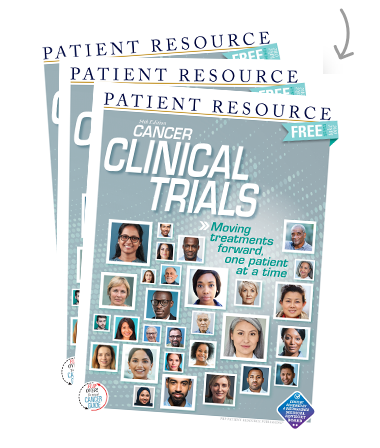Clinical Trials
Informed consent
Every clinical trial includes a safety measure known as Informed Consent. It is designed to protect participants throughout the clinical trial. Once you and your doctor find a trial that may fit into your treatment plan, you will be provided with an Informed Consent document to review. This document can be lengthy, sometimes 20 pages or more, but do not worry. A member of the clinical trial team will guide you, answering your questions along the way.
What is Included in Informed Consent?
Because every clinical trial is unique, each has its own Informed Consent form that has been reviewed and approved by several groups and individuals. It contains customized information about that trial to help you decide whether it is right for you.
Generally, the following key information is included on every Informed Consent form:
- The trial and its goals.
- The best treatment regimen, referred to as standard-of-care treatment, for the stage of your disease, regardless of the doctor or institution.
- The modality (method of treatment) and the dosage/frequency.
- Possible risks and benefits. As with any type of cancer treatment, potential risks as well as benefits may occur. Keep in mind that there is no guarantee that the treatment will be effective for you.
- How you will be monitored.
- The schedule of appointments.
- Potential side effects to expect.
- The costs that are covered by the trial and those that will be your responsibility.
- The safeguards in place.
- How to withdraw from the trial. Even after you begin a clinical trial, you are not locked in. Participation is always voluntary. You can leave the trial at any time and for any reason, and opt for standard-of-care treatment.
You should have a reasonable amount of time to read the information at home. As you do, take notes and make a list of questions to ask.
Next, schedule an in-person or telehealth meeting with the clinical trial team to talk in detail about the trial and ask your questions. You are encouraged to have a family member or friend attend with you. It helps to have another person hear the same information. If English is not your first language, this is the time to request the assistance of a translator at the meeting.
If at any time you find the medical terminology or any other aspect of the trial confusing, simply ask. A member of the team will explain it in easy-to-understand language. Be sure to take notes to refer to later.
After the meeting, check with your health insurance provider to determine the procedures that are covered and those you will be expected or required to pay out of pocket. Although many components of the trial may be covered, other expenses, such as travel, lodging, food, parking and more, may be your responsibility. It is important for you to have this discussion before you begin participating in the trial.
You may request additional time to consider what you have learned or to talk it over with loved ones. If you choose to move forward, let the team know that you are ready to sign the Informed Consent form. Ask for a copy of the signed document for your files.
It is important to know that even after signing the form, you may withdraw from the trial at any time and for any reason.
When changes are made to the clinical trial, such as modifications to procedures or changes to the risks and benefits, the Informed Consent form is revised. As another safety measure, participants must be made aware of any information that may help them decide whether they should continue with the trial.
The Four Phases of Treatment Trials
Treatment trials have traditionally been designed in four phases, an approach that ensures only rigorously researched treatments are approved for the public. The information gained in each phase adds to the knowledge of the next phase. This process allows researchers to ask and answer questions in a way that produces the most reliable information and provides the most protection to trial participants.
Based on the successes of other trials, the FDA recently has shortened its approval times for certain new therapies and will consider approvals at any phase of research, giving patients earlier access to lifesaving treatments.
Phase I
Evaluates a new drug (or other type of treatment) to see if it is safe for use in people. The goal is to determine how and when the drug should be given, and the dosage that will be most effective for killing diseased cells while causing the fewest side effects.
Phase II
Determines how well a treatment works and how safe it is in a greater number of patients.
Phase III
Compares the new treatment with the current standard of care to see whether it is more effective or has fewer side effects.
Phase IV
Tests a drug that has already been FDA-approved for the market to gather more information about its effect in different populations and learn about long-term side effects.



